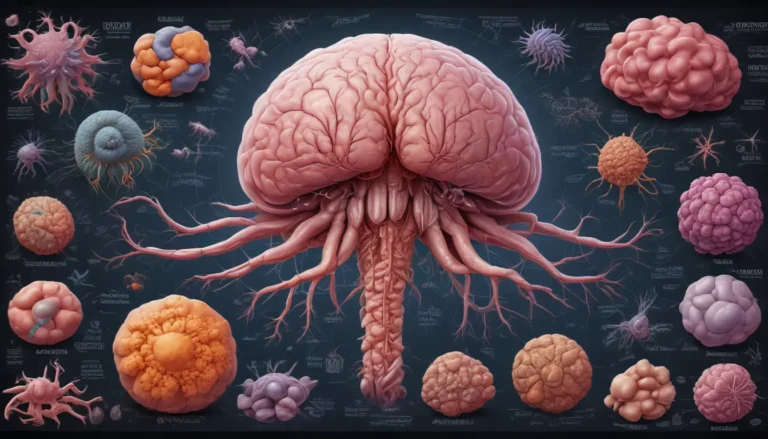A Note About Images: The images used in our articles are for illustration purposes only and may not exactly match the content. They are meant to engage readers, but the text should be relied upon for accurate information.
In the intricate world of biology, cell migration stands out as a fundamental process that drives various biological phenomena, from embryonic development to wound healing and immune responses. The movement of cells within an organism’s body is not just a simple concept but a highly complex and intriguing phenomenon that has captivated scientists for years.
The Significance of Cell Migration
Cell migration serves as a GPS for cells, guiding them to where they are needed in the body for growth, healing, and even in the case of cancer. It is a cellular adventure story unfolding inside each of us, showcasing how individual cells work together to migrate and build our bodies. By understanding cell migration, doctors can heal wounds faster and fight cancer more effectively.
Unveiling the World of Cell Migration
Cell Migration: An Essential Process
Cell migration is a fundamental process in all living organisms, involving the movement of cells within the body. It plays a crucial role in embryonic development, tissue repair, immune responses, and cancer metastasis.
The Driving Forces of Cell Migration
Chemical and physical cues drive cell migration, guiding cells through chemotaxis and responding to gradients in temperature, pressure, and stiffness of their surroundings. These cues are essential for directing cells in specific directions during migration.
Exploring Different Modes of Cell Migration
Cell migration can occur through various modes, including amoeboid, mesenchymal, and collective migration. Each mode involves unique mechanisms and cellular characteristics that contribute to the migration process.
The Role of the Cytoskeleton
The cytoskeleton, composed of microtubules and actin filaments, plays a crucial role in cell migration by providing structural support and generating forces required for movement. Dynamic changes in the cytoskeleton allow cells to extend protrusions and contract their bodies during migration.
Facilitating Cell Migration with Adhesion Molecules
Adhesion molecules, such as integrins, facilitate cell migration by mediating cell attachment to the extracellular matrix and other cells. They also participate in signaling pathways that regulate migration.
Guiding Cells with Chemotaxis
Chemotaxis is a key process that guides cells during migration by sensing and moving towards or away from chemical gradients. It helps cells navigate their environment and reach their target destinations effectively.
Cell Migration in Development and Healing
Cell migration is essential for embryonic development, as cells migrate to specific locations to form tissues and organs. In the context of wound healing, cells migrate to the site of injury to initiate the healing process, involving inflammation, cell proliferation, and tissue remodeling.
Implications in Cancer Metastasis
Aberrant cell migration is implicated in cancer metastasis, where cancer cells acquire the ability to migrate and invade surrounding tissues. This leads to the formation of secondary tumors in distant sites of the body.
Long-Distance Migrators
Some cells, such as neural crest cells, migrate over long distances during embryonic development to give rise to various structures like the heart, craniofacial skeleton, and peripheral nervous system.
Regulation Through Signaling Pathways
Signaling pathways like PI3K-Akt and Rho GTPase pathways regulate cell migration by influencing cytoskeletal dynamics, adhesion, and cellular polarity.
Influence of Single-Cell Behavior
Individual cells within a migrating group can exhibit different migratory behaviors, influencing the overall collective migration process. This interplay is crucial for coordinated movement during tissue development and repair.
The Role of the Extracellular Matrix
The extracellular matrix, composed of proteins and carbohydrates, provides a scaffold for cell migration by forming a supportive framework. Cells interact with the extracellular matrix through adhesion molecules, guiding their movement.
Impact of Physical Forces
Physical forces, including mechanical stretching, compression, and shear stress, can influence cell migration by either enhancing or hindering cell movement. These forces play a crucial role in guiding cells during migration.
Delving Deeper into Cell Migration
These 14 astounding facts about cell migration shed light on the fascinating and complex nature of this fundamental biological process. From embryonic development to cancer metastasis, cell migration plays a critical role in shaping growth, repair, and overall physiological processes. Understanding the mechanisms and regulation of cell migration holds great potential for advancements in regenerative medicine and cancer therapeutics.
In Conclusion
Cell migration is a captivating process that fuels various biological phenomena in living organisms. By unraveling the intricacies of cell migration, we can gain valuable insights into diseases like cancer, chronic inflammation, and wound healing. Exploring the complexities of cell behavior offers a deeper understanding of health and disease, paving the way for innovative therapeutic approaches.
FAQs
-
What is cell migration?
Cell migration refers to the process by which cells move within an organism, essential for biological processes like embryonic development and wound healing. -
How do cells migrate?
Cells migrate through mechanisms like chemotaxis, haptotaxis, and contact guidance, responding to chemical, mechanical, and physical cues. -
Why is cell migration important?
Cell migration is crucial for tissue development, repair, immune responses, and disease processes like cancer metastasis. -
What factors influence cell migration?
Various factors like chemical signals, mechanical cues, adhesion molecules, cytoskeletal dynamics, and the extracellular matrix influence cell migration. -
How is cell migration studied?
Scientists study cell migration through techniques like live cell imaging, genetic manipulation, in vitro assays, and computer simulations to uncover molecular and cellular mechanisms. -
Can cell migration be targeted for therapeutic purposes?
Yes, understanding cell migration can lead to therapeutic strategies to enhance tissue repair, inhibit cancer metastasis, and improve immune responses.
Explore the captivating world of cell migration to gain a deeper understanding of cellular behavior and its implications for health and disease. Join us on this journey of discovery as we delve into the complexities of cell migration and unlock more mind-blowing facts for your curiosity and knowledge. Trust in the authenticity and quality of our content as we strive to provide engaging and credible information for you.






